Enpass is a functional password manager that offers everything you need to make it an option to consider. In this post, we tell you about its main features and how to get it on Linux.
Enpass is a simple and secure app for taking care of your passwords and other credentials. It features dozens of templates to help you securely save any kind of information, including passwords, logins, bank accounts, credit cards, identification cards, passports, and more.
Now, so far, there wouldn’t be much difference from what LastPass or 1Password offers, but what sets Enpass apart is that you have the freedom to choose where to store your passwords.
Enpass is an OFFLINE password manager. So, Enpass encrypts your passwords in vaults stored and synced using on your own cloud accounts. Or you can sync between devices via Wi-Fi and skip the cloud completely.
Of course, with Enpass you will have support for many operating systems such as Windows, Linux, and macOS. But not only that, you can also install it on Android and iOS. It also has extensions for web browsers that will allow you to autocomplete passwords.
As expected, Enpass has the premise that we do not have to remember all the passwords, but one will be enough to unlock our Vault.
As with LastPass, 1Password and other solutions, it has a free version that will be enough to start with the tool and other paid versions oriented to families and work teams.
Let’s see how to get it on Linux.
Get Enpass on Linux
Fortunately, Enpass has an important support for Linux, so most of the distributions are supported without problems.
Enpass on Debian based distributions
The Debian family that includes Ubuntu and its derivatives covers most of the distributions that can be found today. For that reason, Enpass has a dedicated repository to install it.
First, open a terminal and before starting, update the entire operating system.
sudo apt update
sudo apt upgradeThe next step is to add the Enpass repository to the system
echo "deb https://apt.enpass.io/ stable main" | sudo tee /etc/apt/sources.list.d/enpass.listThen download the GPG key from it and add it to the system
wget -O - https://apt.enpass.io/keys/enpass-linux.key | sudo tee /etc/apt/trusted.gpg.d/enpass.ascNow refresh APT
sudo apt updateFinally, you can run this command to install Enpass on Debian based distributions.
sudo apt install enpassGetting Enpass on RHEL-based distributions
In the case of the RHEL family, which includes Rocky Linux and other distributions, the procedure is similar to the above.
First open a terminal and update the whole system
sudo yum updateThen, add the Enpass repository as follows:
cd /etc/yum.repos.d/
sudo wget https://yum.enpass.io/enpass-yum.repoFinally, you can install Enapass
sudo yum install enpassAs you can see, the procedure is simple.
For openSUSE Leap
In the openSUSE Leap case, the procedure is also similar.
First, open the terminal and upgrade the system
sudo zypper upThen, download and import the GPG key from the Enpass repository
wget https://yum.enpass.io/RPM-GPG-KEY-enpass-signing-key
sudo rpm --import RPM-GPG-KEY-enpass-enpass-signing-keyNext, add the repository, update Zypper, and finally install the tool
sudo zypper ar -f -c https://yum.enpass.io/stable/x86_64/ Enpass
sudo zypper update
sudo zypper install enpassEnpass at a glance
As soon as you start the application, you will see a screen like this one
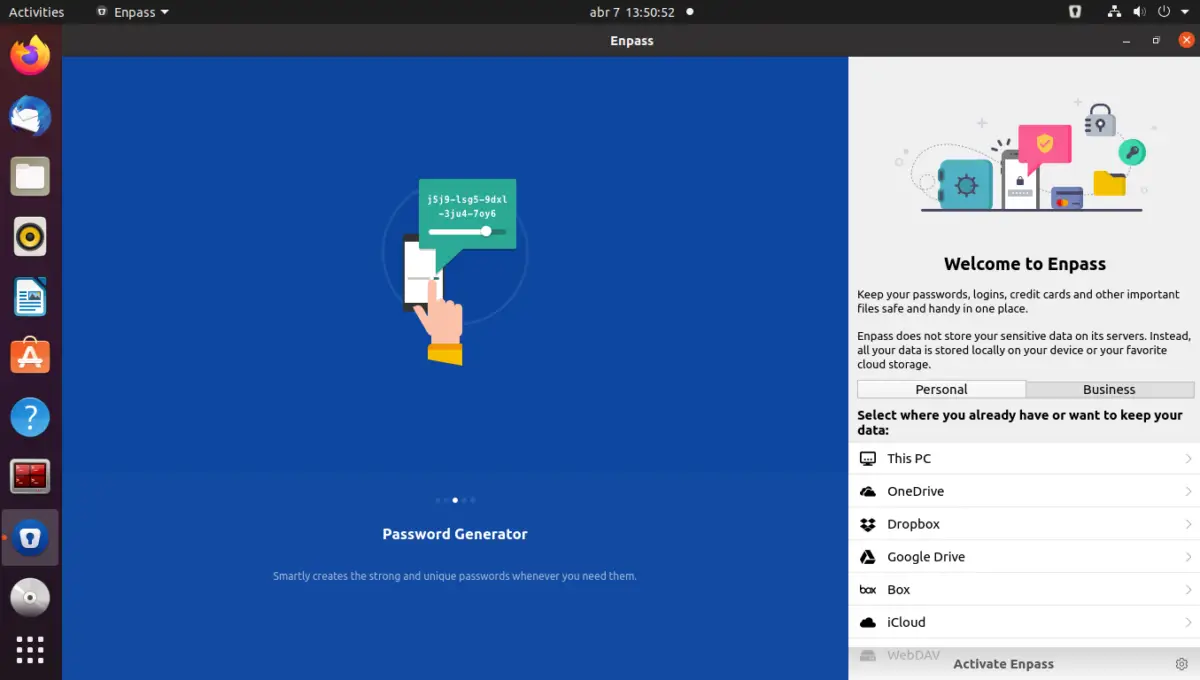
On the right side, you are asked what kind of use you will give to Enpass and where you will store your Vault.
In this case, we have chosen that it will be for a Personal account and that it will be stored on the same PC.
So, the next step is to create a new vault ,although from there you can restore a previously created one.
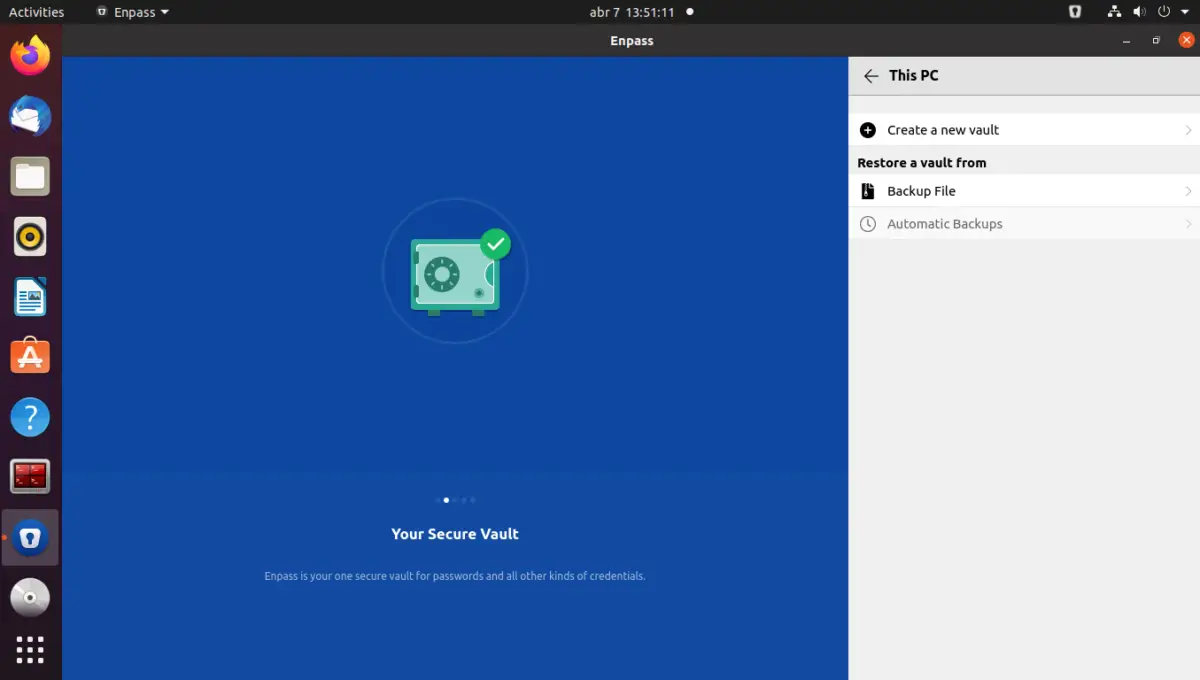
If you create a new one, you will be prompted to create the master password.
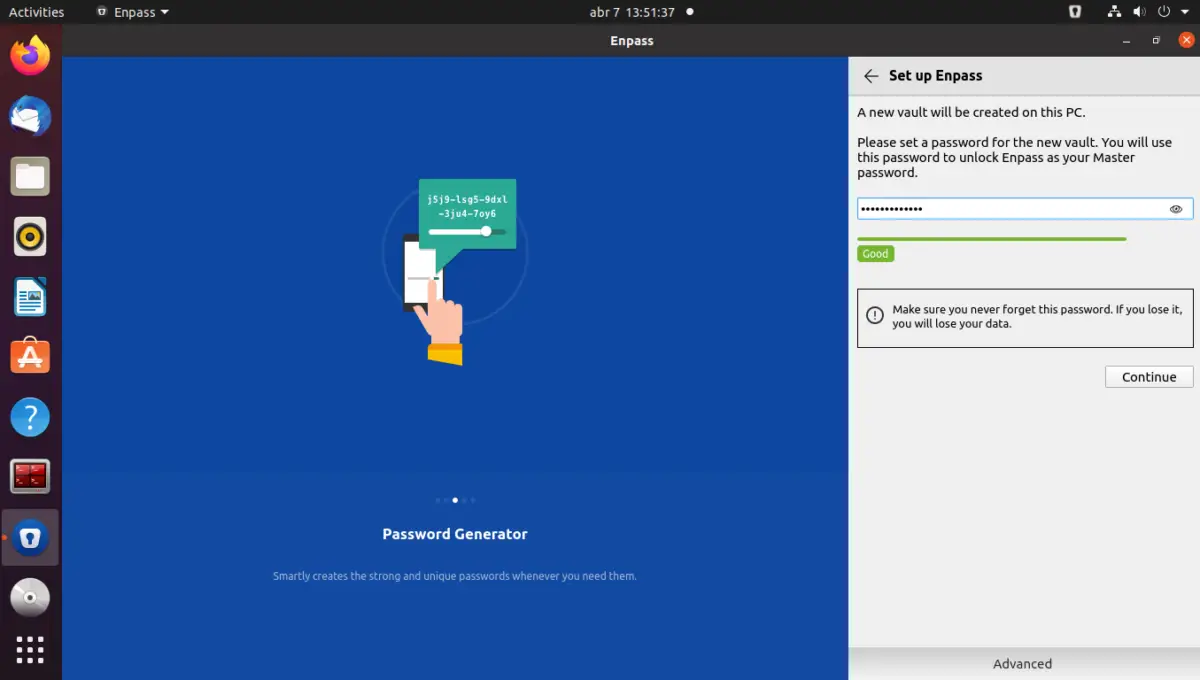
Then the configuration process will finish, and you will see this screen, which is the main screen of the tool.
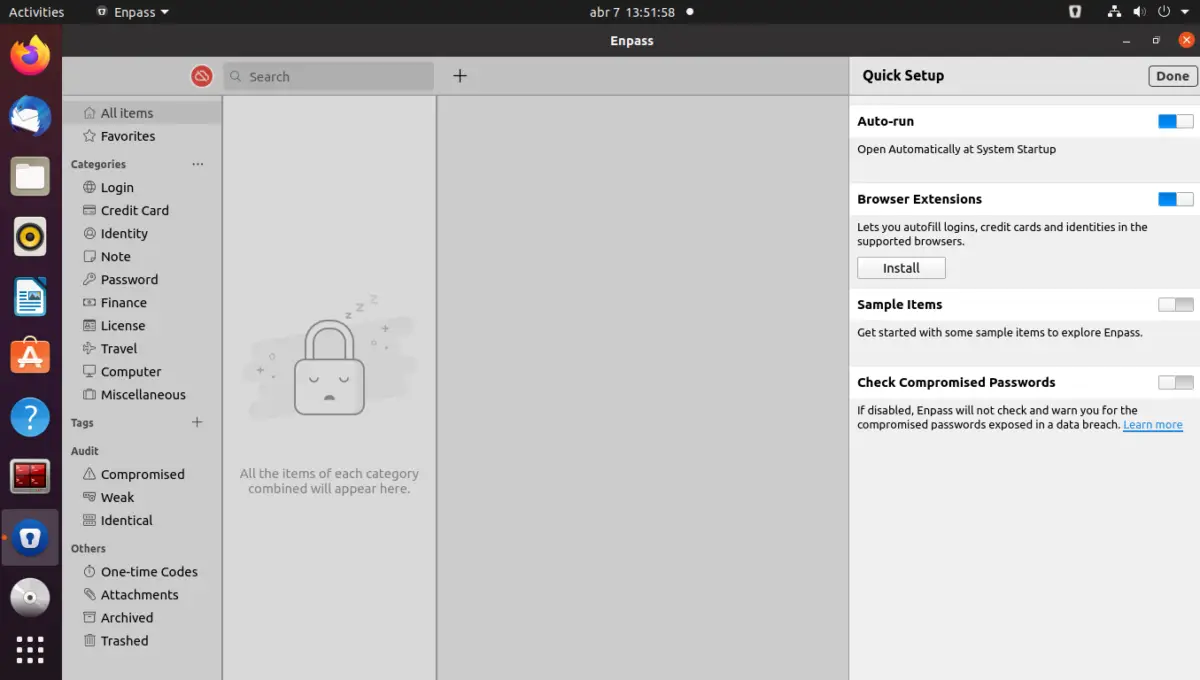
You will quickly see a screen on the right to do a setup when you are ready, press Done.
As you can see on the left side, there are the main options, and the categories of the passwords to store.
On the top panel, you will see a + button that will be used to add a new item.
When you do so, you will see a screen where you will have to choose the category.
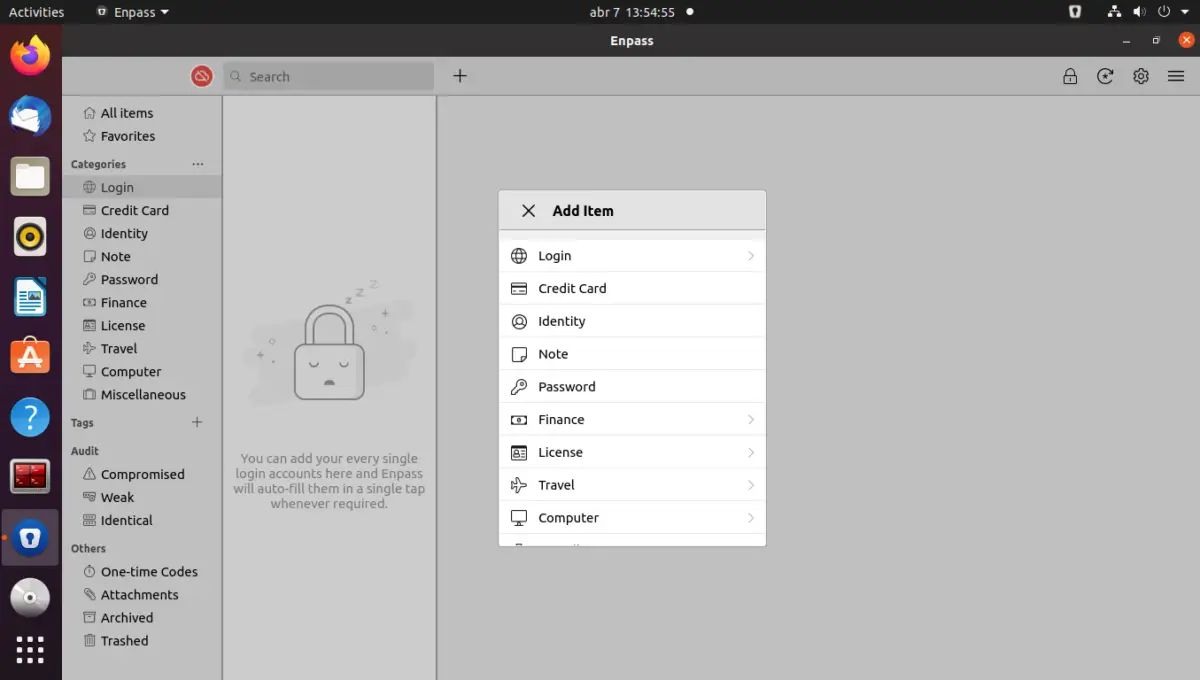
In the case of selecting Login, you will be able to select one of the default templates.
In this case, I will pick Facebook. You will see this screen.
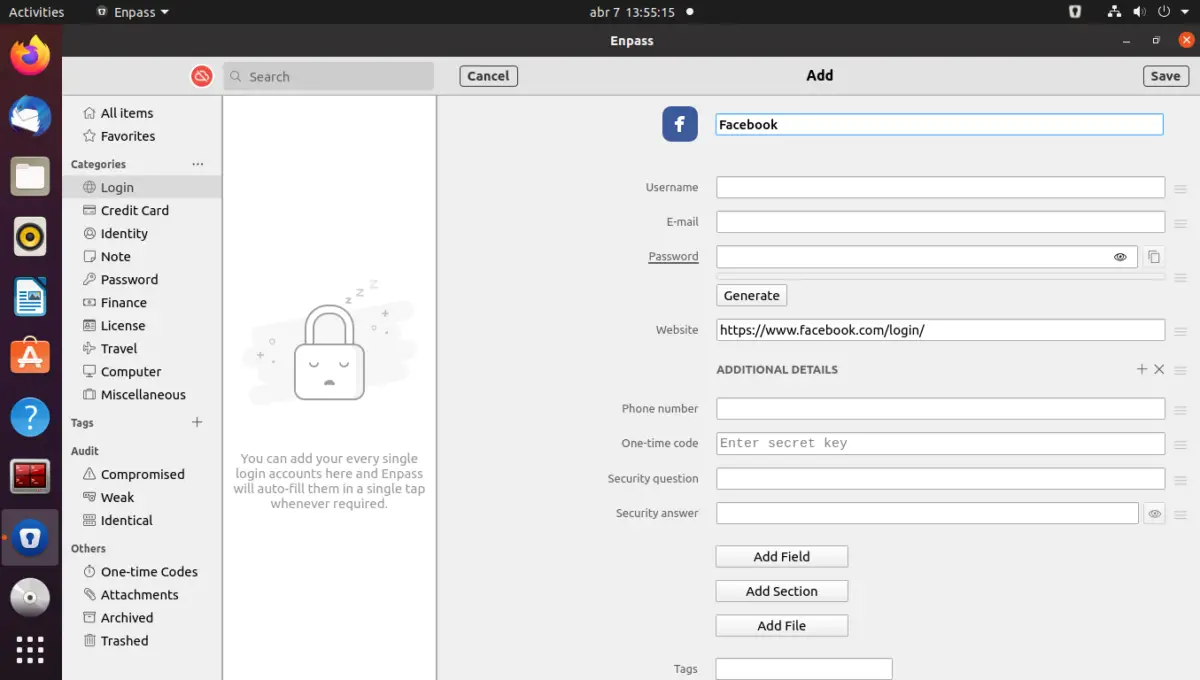
Just fill in the data fields, but you also have the option to generate the password by pressing the Generate button.
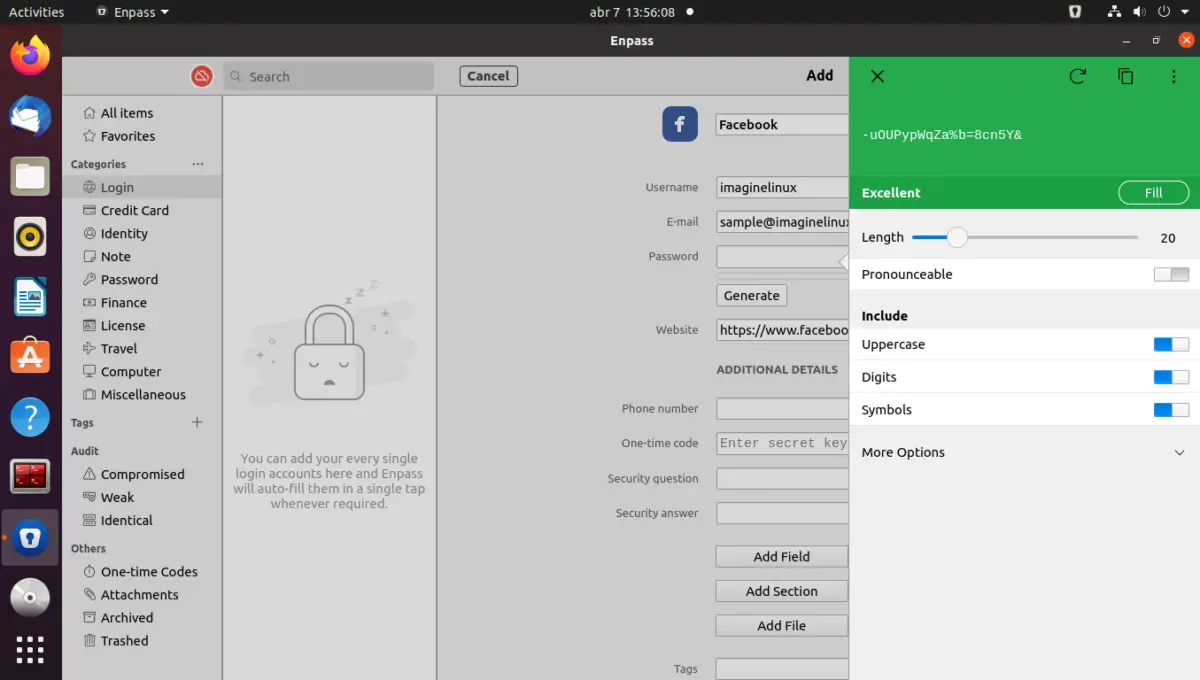
You will be presented with a window where you can select the options for the new password. When you are ready, click on fill.
Continue until you are done. You will get a screen like this.
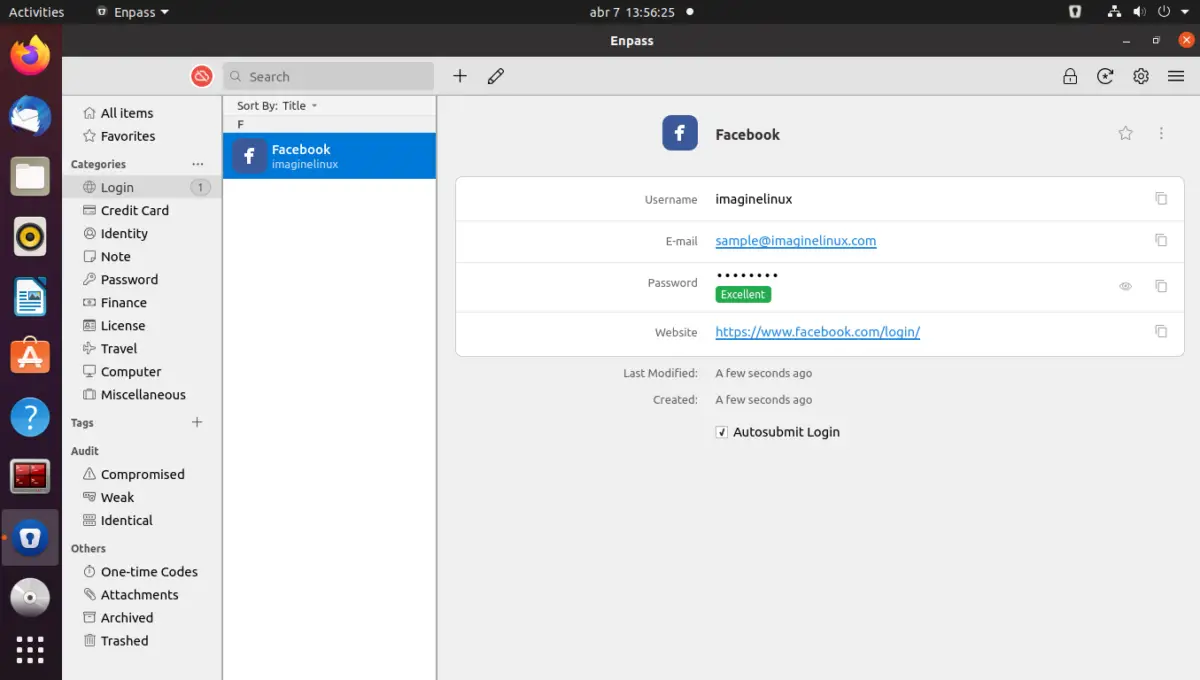
You can also audit your passwords, from the left panel under the Compromised option.
Finally, you can also check the Enpass options to customize it further. For example, you can use a dark theme.
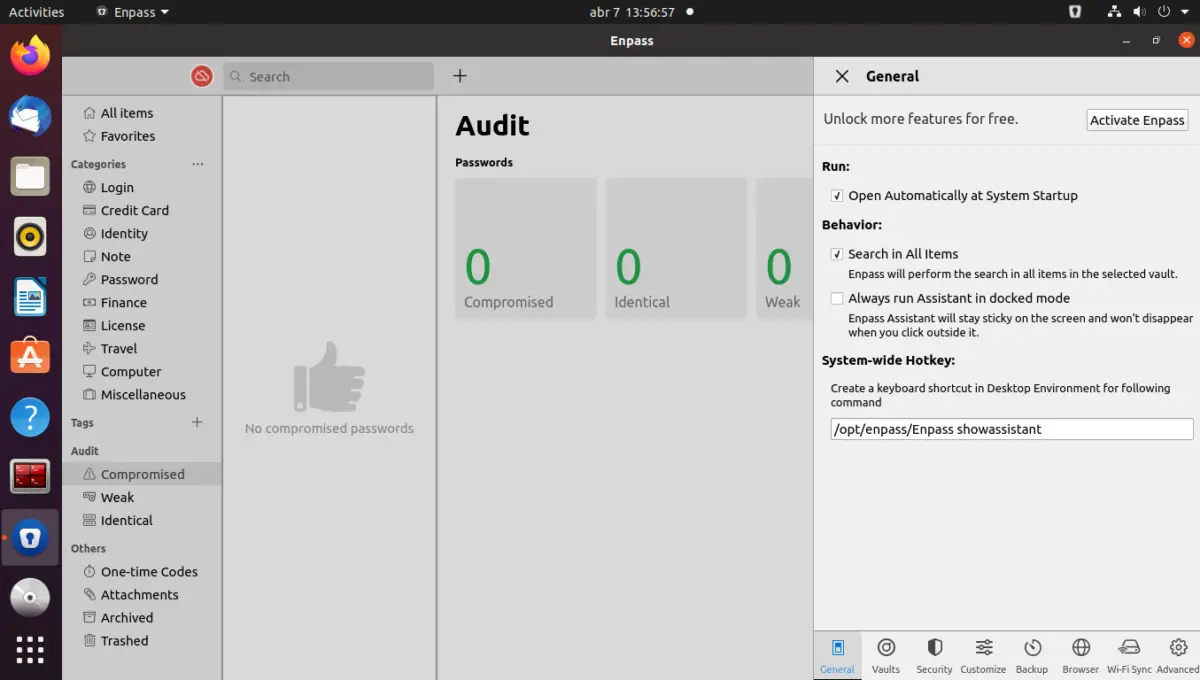
Uninstall Enpass from the system
If you no longer want to use the tool, it is best to remove it from the system.
In the case of Debian and its derivatives, you can run
sudo apt install enpassIf you also want to remove the repository from the system, then run
sudo rm /etc/apt/sources.list.d/enpass.listNow for the RHEL family, you can uninstall it with this command
sudo yum remove enpassAnd to remove the repository run
sudo rm /etc/yum.repos.d/enpass-yum.repoFinally, for OpenSUSE
sudo zypper rm enpassIf you want to remove the repository from the system,
sudo zypper rr EnpassAs you can see, the process is too easy.
Conclusion
Enpass is an innovative password manager that allows us to choose where to store our passwords.
I hope this post serves as an introduction to this great password manager, and you can take a look at it. Share this post so we can continue to grow.